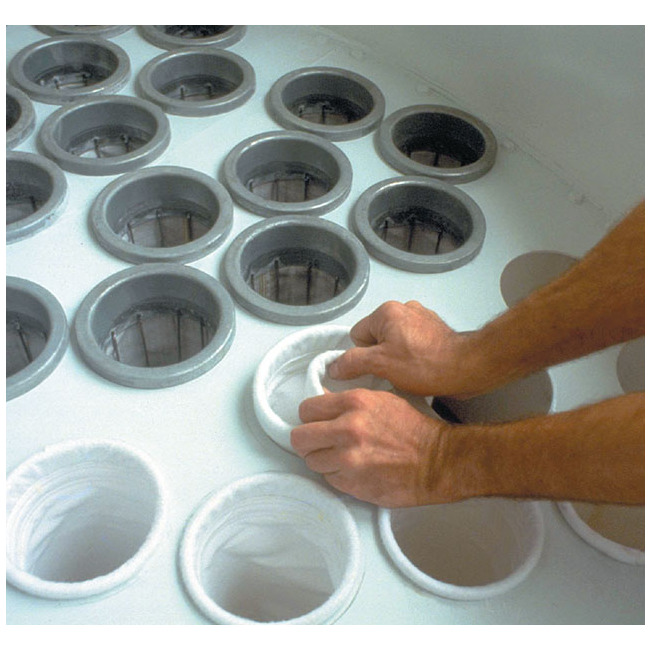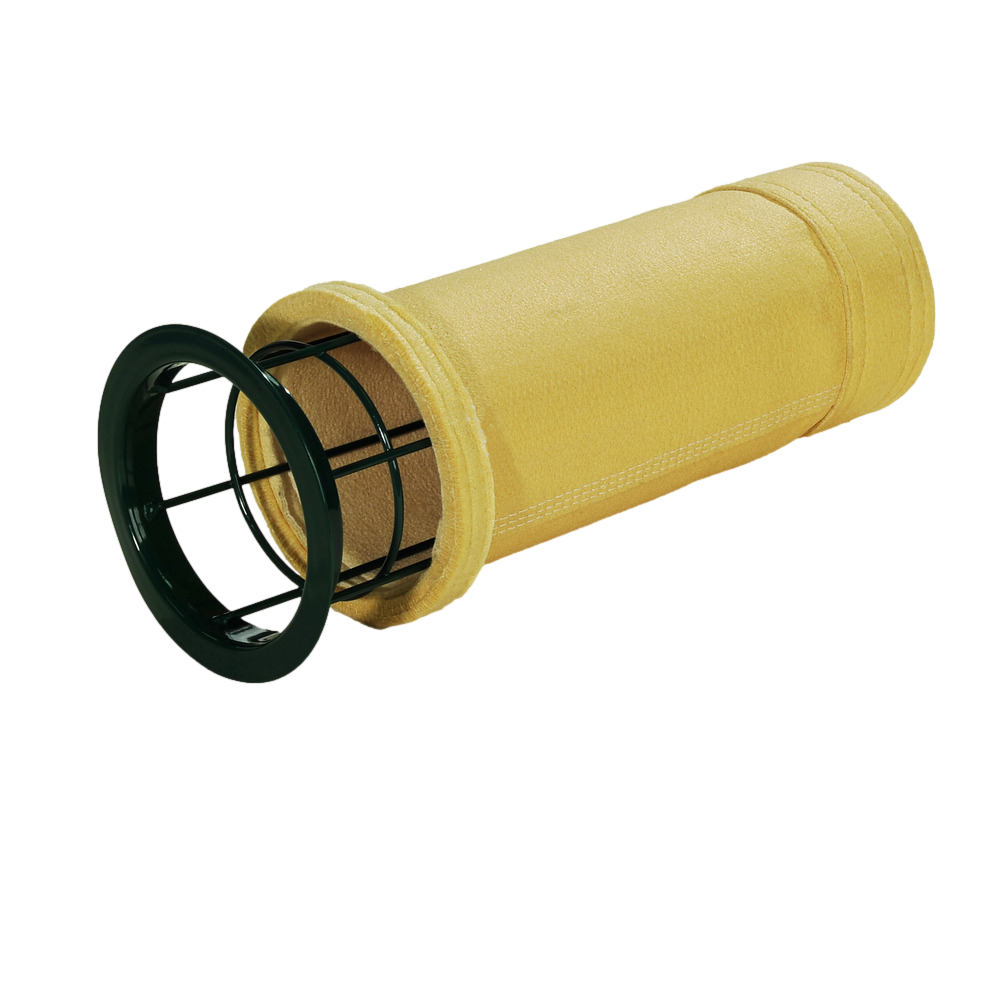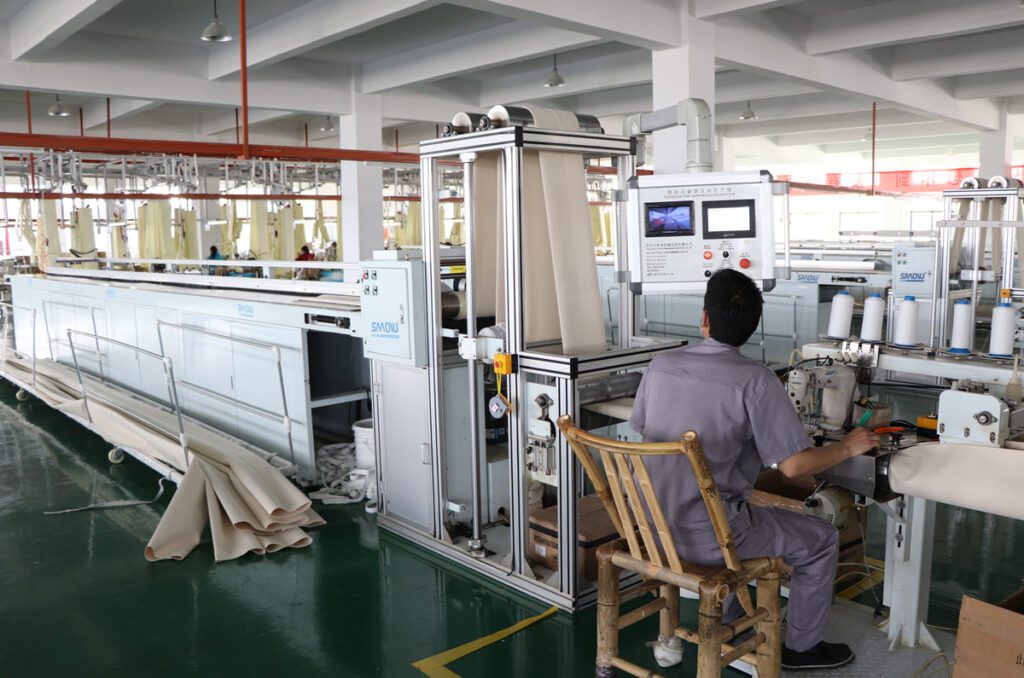Introduction

Baghouse filter materials and membranes are an important part of many industries, including the pharmaceutical and food processing industries. The proper treatment of these materials is essential to ensuring their quality and longevity. In industrial applications, baghouse filters are used to remove particulates from exhaust gases.
The gas is passed through a filter element, typically made of textile or perforated metal, which captures the particles. over time, the filtered particulates can build up on the surface of the filter material and reduce its effectiveness.
In our blog post today, we will discuss some of the best practices for treating baghouse filter materials and membranes. We’ll also provide some tips on troubleshooting common problems that can occur during treatment. By following these tips, you can ensure that your baghouse filters and membranes will provide years of reliable service.
Baghouse Filter Materials and Membranes Treatment Methods
The use of baghouse filters and membranes has become increasingly popular in a variety of industries, as they offer an effective means of removing particulate matter from gas streams. There are a number of different methods that can be used to clean and treat these materials, however, it is important to select the most appropriate method for the specific application. In this blog post, we will take a closer look at some of the different methods that can be used to treat baghouse filter materials and membranes.
Baghouse filters and membranes can be exposed to a wide range of contaminants, including particulate matter, gases, vapors, and liquids. The specific treatment method will depend on the type and concentration of the contaminant, as well as the desired end-use of the material.
Some common contaminants that baghouse filters and membranes may be exposed to include:
- Dust and other particulate matter: These contaminants can be removed using mechanical methods, such as shaking or air jetting, to dislodge the particles from the surface of the filter material.
- Gases and vapors: These contaminants can be difficult to remove and may require chemical treatment to dissolve or disperse them.
- Liquids: These contaminants can be removed using mechanical methods, such as draining or wiping, to remove the liquid from the surface of the filter material.
Removing Dust and other particulate matter from the baghouse filters and membranes

One way to remove dust and other particulate matter from baghouse filters and membranes are to use mechanical methods, such as shaking or air jetting.
Shaking the filter material can help to dislodge any loose particulate matter that is adhered to the surface. This can be done manually, using a shaking machine, or with the help of compressed air. Shaking can be used on both filter media and membranes, however, it is important to note that the intensity of shaking can vary depending on the material being treated.
Air jetting, on the other hand, involves using compressed air and mechanical agitation to dislodge and remove dust particles. This process is often used in combination with other methods, such as HEPA filtration or vacuum pumping, to ensure that all particles are removed from the system.
This method is typically used when the filter material is in a fixed position, such as in a baghouse. The air pressure is carefully controlled to ensure that the filter material is not damaged during the process.
Another option is to use a vacuum cleaner to remove the particulate matter. This method is typically used when the filter material is removable, such as in a filter bag. This method also helps to reduce the amount of dust that gets dispersed into the environment.
It is important to consult with a professional to determine the most appropriate method for your specific situation. In addition, proper handling and disposal of baghouse filters and membranes are important to protect human health and the environment.
How to Remove Gases and vapors from the Baghouse filters and membranes

Removing gases and vapors from baghouse filters and membranes can be more challenging than removing particulate matter. In many cases, chemical treatment may be necessary to dissolve or disperse the contaminants.
Chemical treatment can be used to neutralize the gases and vapors or to absorb them into a liquid medium. Common examples of chemical treatments include adsorption, precipitation, absorption, and oxidation.
Adsorption involves the use of a porous material to trap gases and vapors. Common adsorbents include activated charcoal, silica gel, and molecular sieves. Absorption involves the use of a liquid, such as a solvent or acid, to dissolve the gas or vapor molecules. The liquid is then filtered out, leaving behind a clean filter medium.
Precipitation involves the use of an alkali or acid to chemically react with the contaminants, causing them to precipitate out of the solution. This method is often used when dealing with volatile organic compounds (VOCs) such as gasoline or paint fumes.
Absorption involves the use of a liquid medium to dissolve or disperse the contaminants. Common absorbents include solvents, surfactants, and organic acids. The absorption process can be enhanced by adding catalysts, such as metal oxides.
Another option is to use a chemical oxidation process, such as ozone treatment or peroxide treatment. These processes involve introducing a chemical agent that reacts with the gases and vapors, breaking them down into harmless compounds. Oxidation involves the use of chemical oxidizers to break down contaminants into harmless byproducts. Common oxidizers include ozone and hydrogen peroxide.
Another common method for removing gases and vapors is to use a scrubber. A scrubber uses a liquid or chemical solution to absorb and neutralize the gases and vapors as they pass through the filter material. The liquid or chemical solution is then collected and disposed of properly.
It is important to consult with a professional to determine the most appropriate treatment method for your specific situation. In addition, proper handling and disposal of baghouse filters and membranes is important to protect human health and the environment.
How to Remove Liquids from the Baghouse filters and membranes
To remove liquids from baghouse filters and membranes, you can use mechanical methods, such as draining or wiping.
Draining involves tilting or otherwise positioning the filter material so that the liquid can flow out of it. This method is typically used when the filter material is in a fixed position, such as in a baghouse.
Wiping involves using a cloth or other absorbent material to soak up the liquid from the surface of the filter material. This method is typically used when the filter material is removable, such as in a filter bag.
There are different wiping methods, such as dry wiping, wet wiping, and chemical treatment. Dry wiping involves using an absorbent material to soak up the liquid from the surface of the filter material. Wet wiping involves using a damp cloth or other absorbent material to soak up the liquid from the surface of the filter material.
General treatment methods for the baghouse filter materials

Although there are specific treatments that can be used to remove contaminants from the baghouse filters and membranes, there are also some general treatment methods that can be applied. The general process involves;
Treating baghouse filter materials to remove large particles that may be present.
Before treating baghouse filter materials, the efficient process of removing large particles is essential. This may involve aggressive mechanical cleaning, utilizing a variety of processes such as crushing, sieving, or screening.
Not only does this reduce clutter in the baghouse filter system, but it can help ensure that downstream treatments for smaller particles are not contaminated by any larger material that may be present. By starting the treatment with an efficient way to remove these larger particles, we can maximize the effectiveness of subsequent treatments for removing the finer materials.
Placing them in an oxygen-rich environment to soak for a period of time.
Once the material is ready to be hardened, it is moved to an oxygen-rich environment where it stays for a set period of time. This step helps create a strong bond between the molecules in the material and distributes air pockets evenly throughout, which helps with flexibility and durability.
During this process, the material is monitored constantly to ensure that the desired physical properties are being achieved, resulting in a finished product that will stand up to wear and tear and look great in any setting.
Placing in a pressurized chamber where it is exposed to high temperatures and pressure.
The baghouse filter materials and membrane undergo a multi-step treatment process after soaking. In the pressurized chamber, these items face extreme temperatures and pressure that serve to burn off any remaining impurities. This helps to protect the equipment from damage caused by corrosion or other processes due to the presence of various solid particles.
It also ensures quality filtration for future applications by properly purifying the filter materials. Even though placed in such harsh conditions, modern technology enables these systems to remain stable under intense conditions and operate smoothly for extended periods of time.
Finally, the treated baghouse filter is cooled and stored ready to be used again.

The process of treating baghouse filter materials is a series of intricate steps. The fibers first go through a combustion process to burn off any dangerous impurities, then on to a gas cleaning process, and finally, end with a cooling stage. This cooling of the treated baghouse filter materials is necessary, as temperatures can become quite high during the preceding processes.
Once cooled, the filter material can be safely stored for future use – often in large rolls, ready for when it’s needed. With appropriate care taken throughout the preparation process, these filter materials should provide many years of reliable performance without fail.
How to tell if the Baghouse filters and membranes need treatment
There are several signs that may indicate that baghouse filters and membranes need treatment. These can include:
● Visible contamination on the surface of the filter material
When inspecting a filter material, any signs of visible dirt or debris should be noted and further investigated. If the contamination is not too extreme, it may be possible to simply clean the surface of the material.
For heavier contamination, however, more intensive treatment may be necessary in order to restore it to optimal condition.
● Changes in the performance of the filter, such as reduced airflow or increased pressure drop
A decrease in the performance of the filter material can be an indication that something is amiss. In such cases, it’s important to investigate further and determine what’s causing the issue.
It may be possible to easily repair a damaged filter or membrane, but in other situations, a full treatment may be necessary. If treatment is deemed necessary, it’s important to act quickly in order to restore the filter material to optimal performance as soon as possible.
● Reduction in the overall durability of the filter material

Over time, filter materials can become worn out or degraded due to use. This can result in reduced effectiveness and an increased risk of failure. If this occurs, it’s important to determine the cause and take appropriate action to restore the filter material to optimal condition.
Treatment may be necessary in order to remove any accumulated dirt or debris, as well as to restore the structural integrity of the material.
● Odors emanating from the filter material
If foul smells are coming from the filter material, this can be an indication that something is wrong. It may indicate the presence of bacteria or other contaminants, which must be removed in order to restore the filter material to optimal condition.
● Excessive dust or other particulate matter in the exhaust gas
When inspecting the exhaust gas coming from a baghouse, any signs of particulate matter should be noted. If there is an excessive amount of dust or other particulates present, it may be a sign that the filter material is failing and needs to be treated.
If you notice any of these signs, it is important to consult with a professional to determine the appropriate treatment method for your specific situation. In some cases, the filter material may need to be replaced if it is no longer suitable for its intended use.
In addition, regular maintenance and inspections of your baghouse filters and membranes can help to prevent the need for treatment and extend the life of the filter material. This can include cleaning the filter material on a regular basis and monitoring its performance to ensure that it is functioning properly.
After treatment, quality control tests should be conducted in order to ensure that the desired physical properties have been achieved and that the filter material is ready for use. Overall, the process of treating baghouse filter materials can be complex and requires careful consideration.
Conclusion

The baghouse filters and membranes play a critical role in maintaining air quality and performance. It is important to ensure that these components remain in good condition, as any damage or wear can reduce efficiency and possibly lead to system failure. Regular inspections and maintenance can help to prevent the need for treatment, but when it is necessary, it is important to act quickly in order to restore the filter material to optimal condition.
It is important to consult with a professional to determine the most appropriate treatment method for your specific situation. In addition, proper handling and disposal of baghouse filters and membranes is important to protect human health and the environment.




